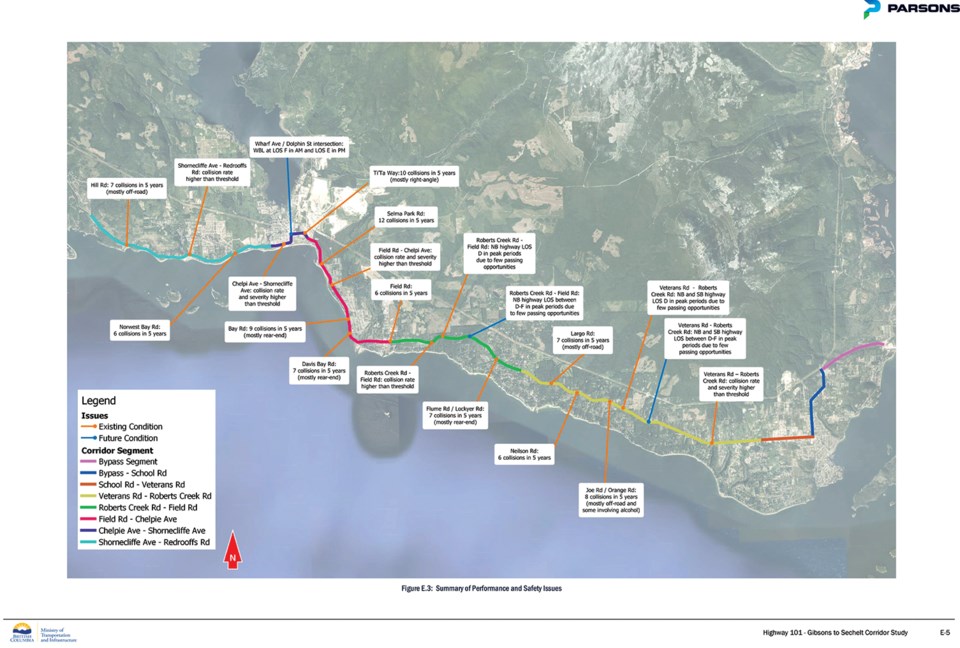Barely a drop in the bucket. That’s how any discerning reader of the latest Highway 101 corridor study would have to describe the province’s announcement last week that it was committed to carrying out “safety improvements” on the Sunshine Coast’s only connecting artery.
Although the study concludes that “the existing highway is operating satisfactorily under current traffic demands,” it also shows in detail that Highway 101 has many serious problems that are bound to get worse unless costly measures are taken.
Comparing the data on Highway 101 to “provincial averages for similar roadways by service class and volume range,” the study identifies five “collision-prone segments” and 13 specific locations with high frequency of collisions.
The five collision-prone segments are: Veterans Road to Roberts Creek Road, Roberts Creek Road to Field Road, Field Road to Chelpi Avenue, Chelpi Avenue to Shorncliffe Avenue, and Shorncliffe Avenue to Redrooffs Road.
In other words, the entire length of Highway 101 from the edge of Gibsons to the Halfmoon Bay turnoff is “collision prone” based on provincial averages.
The NDP government, to its credit, has agreed to spend an estimated $2 million plus additional project costs to fix the Joe Road/Orange Road intersection in the summer of 2021, but there are no hints of future plans to tackle the remainder of the long list of needed improvements identified by the consultants. These include:
• Building three passing lanes – southbound between Leek Road and Highland Road, northbound between Leek Road and Maskell Road, and northbound between Pell Road and Jack Road.
• Upgrading seven other problem intersections – Lower Road/Highland Road, Flume Road, Ti’Ta Way, Wharf Avenue/Dolphin Street, Shorncliffe Road, Hill Road, and Redrooffs Road.
• Undertaking major improvements along five kilometres in the Davis Bay/Selma Park area. The work would involve adding new turn lanes on 11 roads, closing one intersection and widening the highway to include a two-metre sidewalk on the east side of the road and two-metre paved shoulders on both sides of the road between Field Road and Monkey Tree Lane.
Since the combined cost of all these projects would be in the tens of millions, the province has opted instead to study the feasibility of a bypass around the whole mess, with consultation to begin next year.
If the Joe Road upgrade is a mere Band-Aid, the bypass study is likely no more than a placebo, a futile exercise that will buy time and let the public blow off some steam.
The money isn’t there to fix the highway. Talk is much cheaper.



